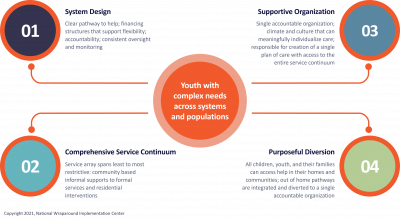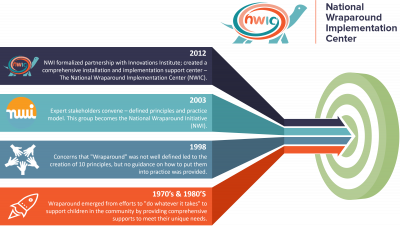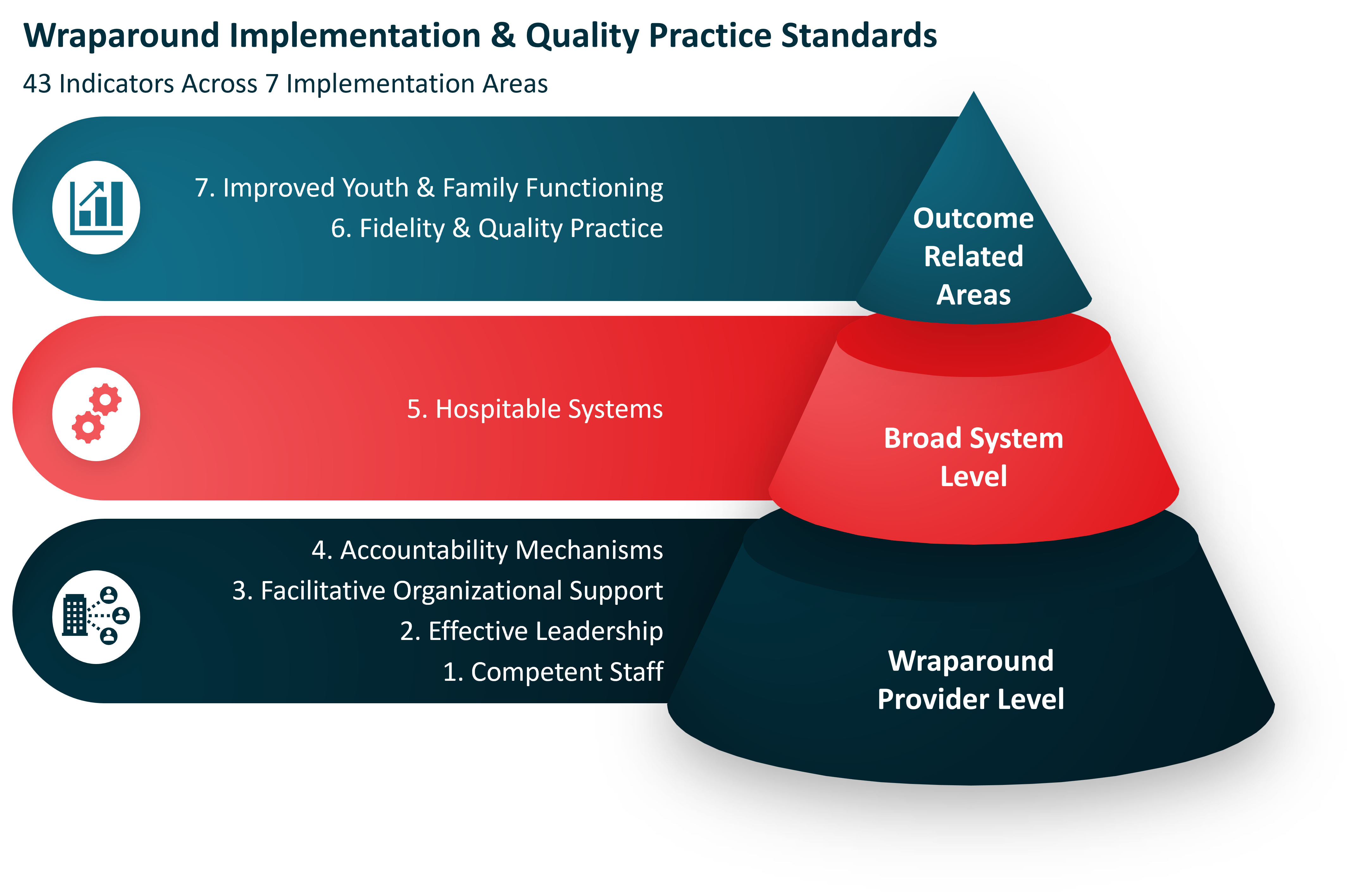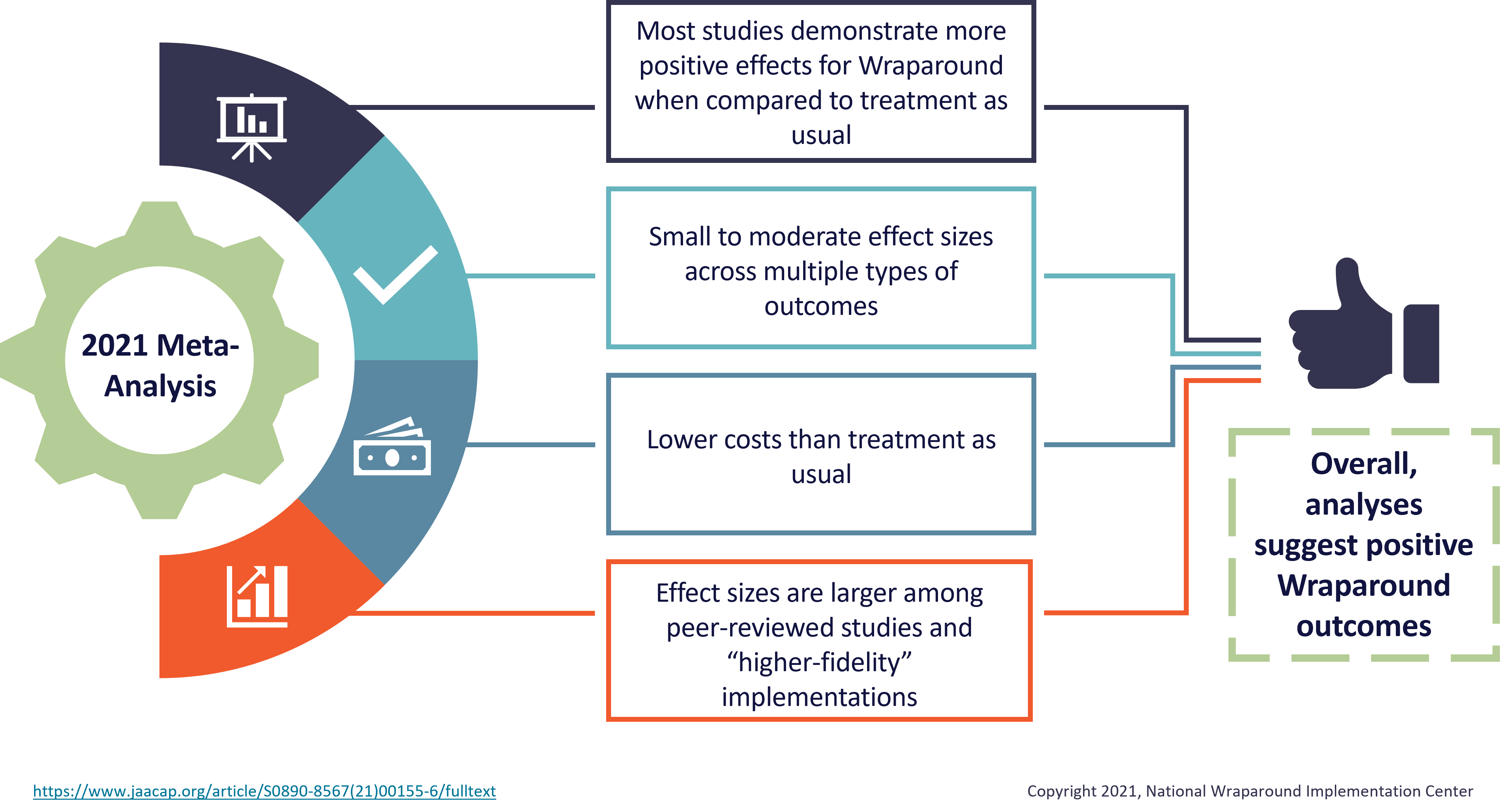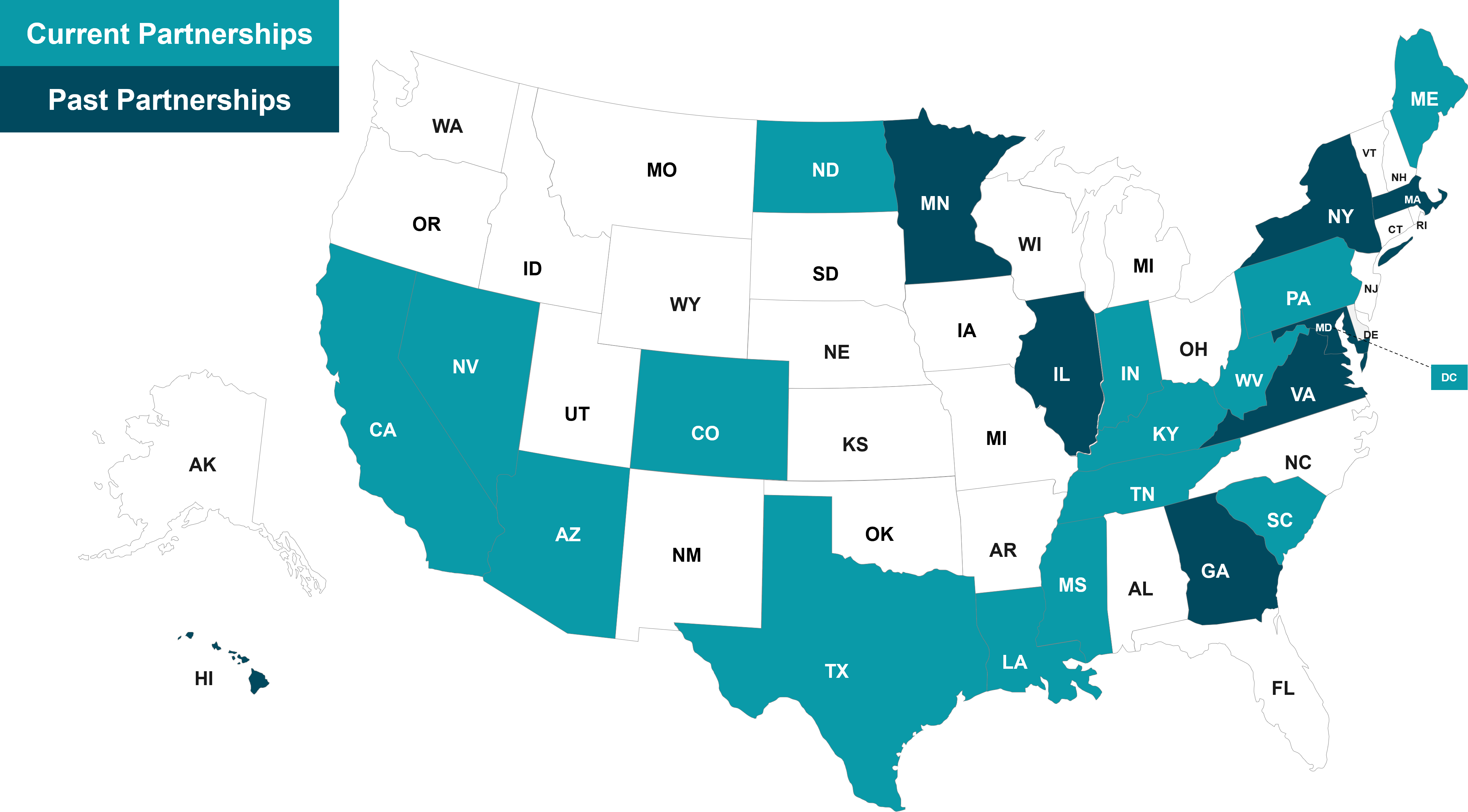
Wraparound
Wraparound is a structured way to organize services and supports for young people with complex behavioral health needs and their families. A team, committed to creating and carrying out a plan that meets the needs of the young person and their family, is led by a care coordinator, and involves family members and people from different parts of the family's life. The goal of Wraparound is to ensure that young people realize their hopes and dreams, and experience success in their homes, communities, and schools. This intensive, creative team approach makes Wraparound unique.
The Wraparound movement began in the 1980s in response to the lack of effective community options for providing intensive supports to youth with complex behavioral health needs and their families. Our team has taken a lead role in establishing Wraparound as a well-defined and research-based care coordination practice model. We work at the state, local, and program levels to ensure that Wraparound serves as a system intervention to support behavioral health reform.
System Support for Youth with Complex Needs Include:
Highlighted Resources
- Addressing the Behavioral Health Workforce Crisis
- Monthly Minute: Introduction to Wraparound for Families
- Monthly Minute: Introduction to Wraparound for Systems
- Monthly Minute: Coordinating Wraparound with Evidence-based Practices
- Case Management vs. Care Coordination
- Wraparound Process User's Guide: A Handbook for Families (Spanish)
National Wraparound Implementation Center (NWIC)
Innovations Institute is a founding member of the National Wraparound Implementation Center (NWIC), a partnership among University of Connecticut, Portland State University, and the University of Washington. Founded in 2012, NWIC supports states, communities, and organizations to implement Wraparound as part of broader health reform strategies by focusing on research-based drivers of implementation: organizational and system development; workforce development; and accountability. NWIC uses innovative approaches grounded in implementation science to comprehensively support implementation and build sustainable local capacity to to provide high-quality Wraparound. NWIC works with states and sites in any stage of implementation, from initial planning to established initiatives, using an integrated, tailored, and intensive approach to implementation support.
Our Approach
We work closely with states, communities, and organizations to ensure an integrated approach to Wraparound implementation, which helps to ensure positive outcomes. Our work can begin at any stage of implementation—from initial planning to established initiatives—and uses a tailored and intensive approach to implementation support. Our process begins with a rigorous assessment of current implementation. Based on assessment results, a comprehensive Wraparound implementation support plan is created to address identified needs.
Organization & System Development
We focus on policy, financing, and systems structure. This work may include policy and procedure development and monitoring; guidance on cross-system financing and service array development; creation and implementation of a workforce development plan; and readiness and implementation support.
Workforce Development
We focus on processes for training, coaching, and supervision. This includes building local capacity through a train-the-trainer process and provision of system level implementation support. The National Wraparound Implementation Center (NWIC) provides the necessary support, training, and coaching to sustain high-fidelity to the model and quality practice for families.
Accountability
We focus on the measurement of key quality assurance indicators and outcomes. We are dedicated to measuring implementation drivers, practice quality, and outcomes. Our efforts support Wraparound initiatives with common goals, including enhancing data collection and utilization for program and system management.
Why Wraparound?
There is strong evidence that, when Wraparound is done well, or with “fidelity,” young people are more likely to stay in their communities, and to experience improved mental health and better functioning across life domains. Extensive evaluation data show that Wraparound typically saves money by minimizing the time young people spend in out-of-home facilities like residential treatment centers or hospitals.
Outcomes
Insights from our implementation research indicate that by focusing on specific aspects of implementation, we can enhance the effectiveness and efficiency of delivering and maintaining Wraparound, leading to improved outcomes. We work to ensure positive outcomes for children, youth, and families by offering solutions at the system, organization, and practice levels.
State/System Level
Wraparound is a system intervention that requires significant reconfiguration, meaning that the systems will have to shift and change for Wraparound to be implemented effectively and work. We help to assess the infrastructure of the system to identify and overcome potential barriers to Wraparound implementation and promote long-term sustainability.
Organization/Provider Level
At this level, Wraparound is used to support a population of youth whose needs exceed the resources and expertise of one organization. Organizations work to bring relevant providers, community members, and other informal supports together to provide families with an experience unlike traditional outpatient services. Our team focuses on processes for training, coaching, and supervision offering a train-the-trainer model that builds local capacity to sustain a high-fidelity and quality Wraparound practice.
Practice Level
Wraparound works at this level to hold teams accountable for providing meaningful choice and create individualized supports to families as well as achieving outcomes that make families’ lives better. We contribute to such accountability by supporting identification of core system and youth outcomes; providing help in determining relevant stakeholder data needs; and prioritizing and strategizing around data collection, analysis, and reporting.
